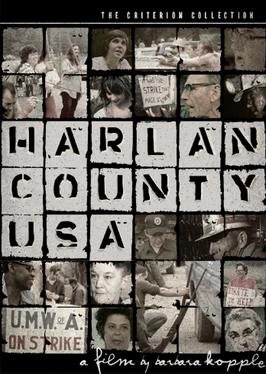- Joined
- Jan 22, 2017
- Messages
- 14,810
- Reaction score
- 22,677
- Location
- U.S.A.
- Gender
- Female
- Political Leaning
- Libertarian - Left
During a recent wikipedia rabbit hole, I discovered an insane piece of US history I have never heard talked about. Everyone knows about company towns, but what I didn't know what that there was a period between the 1890s and the 1930s where there were straight up sporadic small scale conflicts between organizing union workers and the private union busters/private military of the coal companies. The things these companies were able to get away with sounds like something from a movie that's trying a little to hard to make their evil villain corporation seem evil;
Some of these events happened barely even 100 years ago, which is just crazy to me. One such event is particularly crazy. The Battle of Blair Mountain in 1921 was the largest armed conflict on US soil since the civil war. It reads like something out of a wild west movies.
Agents from Baldwin-Felts strike breakers went to Matewan and evicted several striking worker's families from their company housing. As they went to leave they were confronted by the chief of police, Sid Hatfield who was pro union. He presented the deputized several miners and told the agents, one of whom was a Felt brother, that they were under arrest. Albert felt then presented a warrant for Hatfield's arrest. The mayor was made aware of the situation and came out to investigate, looked at the warrant for Hatfield's arrest and declared it was bogus. A gunfight ensued, which resulted in the Felt brother and his agents being killed along with the mayor. The felts pressed charges on Hatfield for another unrelated incident after he was acquitted of the murder charges, but it appeared he would get off. Before the end of the trial however another one of the Felt brothers ambushed him along with several other Baldwin-Felt company agents.
The Felt agents were not convicted of the assassination that took place in broad daylight on the steps of the court house, claiming they were acting in self defense. The miners were furious at the murder, as Hatfield had become something of a symbol of unionization and workers rights.
Mining families lived under the terror of Baldwin-Felts detective agents who were professional strikebreakers under the hire of coal operators. During that dispute, agents drove a heavily armored train through a tent colony at night, opening fire on women, men, and children with a machine gun.[3] They would repeat this type of tactic during the Ludlow Massacre in Colorado the next year, with even more disastrous results. (Source)
Some of these events happened barely even 100 years ago, which is just crazy to me. One such event is particularly crazy. The Battle of Blair Mountain in 1921 was the largest armed conflict on US soil since the civil war. It reads like something out of a wild west movies.
Agents from Baldwin-Felts strike breakers went to Matewan and evicted several striking worker's families from their company housing. As they went to leave they were confronted by the chief of police, Sid Hatfield who was pro union. He presented the deputized several miners and told the agents, one of whom was a Felt brother, that they were under arrest. Albert felt then presented a warrant for Hatfield's arrest. The mayor was made aware of the situation and came out to investigate, looked at the warrant for Hatfield's arrest and declared it was bogus. A gunfight ensued, which resulted in the Felt brother and his agents being killed along with the mayor. The felts pressed charges on Hatfield for another unrelated incident after he was acquitted of the murder charges, but it appeared he would get off. Before the end of the trial however another one of the Felt brothers ambushed him along with several other Baldwin-Felt company agents.
Along with him traveled a good friend, Ed Chambers, and their wives.[25] As they walked up the courthouse stairs, unarmed and flanked by their wives, a group of Baldwin-Felts agents standing at the top of the stairs opened fire. Hatfield was killed instantly. Chambers was bullet-riddled and rolled to the bottom of the stairs. Despite Sally Chambers' protests, one of the agents ran down the stairs and shot Chambers once more, point-blank in the back of the head.[26] Hatfield's and Chambers' bodies were returned to Matewan, and word of the slayings spread through the mountains.
The Felt agents were not convicted of the assassination that took place in broad daylight on the steps of the court house, claiming they were acting in self defense. The miners were furious at the murder, as Hatfield had become something of a symbol of unionization and workers rights.
On August 7, 1921, the leaders of the United Mine Workers (UMW) District 17, which encompasses much of southern West Virginia, called a rally at the state capitol in Charleston. These leaders were Frank Keeney and Fred Mooney, who were veterans of previous mine conflicts in the region. Both were local, well-read and articulate. Keeney and Mooney met with Governor Ephraim Morgan and presented him with a petition of the miners' demands.[29] When Morgan summarily rejected the demands, the miners became more restless and began to talk of a march on Mingo to free the confined miners, end martial law and organize the county. But Blair Mountain, Logan County, and Sheriff Chafin stood directly in the way.
Last edited:

